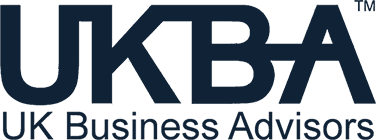Asking customers to pay to join a special group of your best patrons can increase your turnover; encourage customers to buy new products and services from you, and provide a healthy boost to your cash flow. Just ask Jeff Bezos, the founder of Amazon.com and the chief architect behind Amazon Prime. In exchange for £49 a year, Amazon Prime customers get:
- FREE One-Day Delivery with no minimum order size on millions of items.
- Upgrades to Express Delivery (before 1pm) for just £4.49 per item and Evening Delivery to all eligible addresses for just £7.48 per item.
- Over 350,000 popular Kindle Books to borrow for free, with no due dates.
According to TIME Magazine, more than 10 million people have signed up for Amazon Prime programs worldwide. If you do the maths, that makes Prime a five hundred million pound business for Amazon. And like most programs, members pay upfront, giving Amazon a big injection of positive cash flow.
But what is even more interesting is what being a member of Prime does to the buying behaviour of the average Amazon customer. In the United States, Amazon Prime customers pay their $79 upfront and therefore are eager to ‘get their money back’ by purchasing a bigger and broader array of products from Amazon. With free shipping and a $79 nut to recover, Prime customers go well beyond buying books from Amazon and now get everything from tyres to turtle-necks from the e-tailer. According to TIME, the average Prime customer in the U.S. now spends $1,224 per year with Amazon vs. the average non-Prime customer who spends just $505. In other words, Prime customers spend almost three times more per year than non-members.
Most businesses have some sort of loyalty program (buy nine sandwiches and the tenth is on us, or get five haircuts and the sixth is free). The difference with Amazon Prime is they are charging customers to sign up for their special club, and the fact that customers pay to join changes their buying behaviour to want to recover their membership fee.
Amazon did not invent the pay-to-join-our-club business model. Private members clubs have been doing it for years. To join an elite golf club, you pay an initiation fee of tens of thousands of pounds, which then acts as a barrier to ever leaving. But as with Amazon Prime customers, becoming a member also changes a member’s buying behaviour regarding other items. When compared to someone playing 18 holes at a public course, the average golf club member is much more likely to buy balls from the shop, lessons from the pro, and dinner from the dining room.
The American cinema company called AMC offers “AMC Stubs”. Customers get free upgrades on the size of popcorn and drink orders, along with $10 of Stubs rewards to spend on anything in the theatre in return for every $100 spent. AMC’s best customers become even better customers by going to the cinema even more often, and filling up with goodies while they’re there.
Look at the spending patterns of people who pay a premium to join a credit card company’s loyalty program. Customers who pay upfront for a premium card charge a much broader and deeper set of services to their card than people using a freebie card.
Getting your customers to pay to join your elite customer club requires that you design a compelling offer as Amazon Prime and AMC Stubs have done. But if you build it carefully, not only will the club itself turn a profit; it will also provide a quick boost to your cash flow, and create a legion of sticky customers who buy more because they have paid to become a member.
